 El barrio de Recoleta debe su nombre al Convento de los Padres Recoletos, que luego se convirtió en un hospital de sangre, un cuartel y, por último, en un asilo de ancianos.
El barrio de Recoleta debe su nombre al Convento de los Padres Recoletos, que luego se convirtió en un hospital de sangre, un cuartel y, por último, en un asilo de ancianos. Hoy alberga un centro cultural y está ubicado entre un complejo comercial de diseño y la iglesia Nuestra Señora Del Pilar (1732). Contiguo a ésta, se halla el Cementerio de la Recoleta (1822), considerado el más importante del país por la arquitectura de sus monumentos y bóvedas, más de setenta de las cuales han sido declaradas Monumento Histórico Nacional. También, aunque resulte inusual, la zona está rodeada de elegantes restaurantes, bares, discotecas, espectáculos al aire libre, un complejo de cines y hasta una gran feria artesanal que funciona los fines de semana.
Las plazas y parques caracterizan este barrio de típica arquitectura francesa, pero también la cultura. Frente a la plaza se encuentran las Salas Nacionales de Cultura (1917) -más conocido como Palais de Glace y, cruzando la Avenida del Libertador, está el Museo Nacional de Bellas Artes (1933). Más allá, se hallan los impactantes edificios de la Facultad de Derecho y la Biblioteca Nacional (1992). No deje de recorrer esta elegante zona durante el día y la noche.
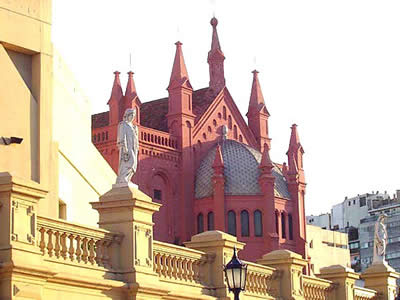
Vista del Auditorio y la terraza del Centro Cultural Recoleta
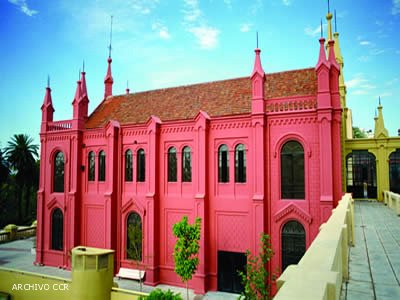 Auditorio del Centro Cultural Recoleta
Auditorio del Centro Cultural Recoleta
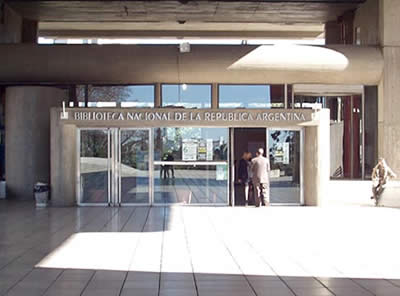
Entrada de la Biblioteca Nacional de la República Argentina
 Vista lateral de la Biblioteca Nacional
Vista lateral de la Biblioteca Nacional
Recoleta neighborhood owes its name to the Recoletos Priests Monastery that later became a blood hospital, a barrack and at last, a nursing home for old people. Nowadays, it's seat of a cultural center and it's located between a design trading complex and Nuestra Señora del Pilar Church (1732). Next to the church, one finds the Recoleta Cemetery (1822), considered the most important in the country because of the architecture of its monuments and vaults, of which, more than seventy have been declared National Historic Monuments. Although it may seem unusual, the area is also surrounded by elegant restaurants, bars, discos, outdoor shows, a cinema complex and even a great handicrafts fair that opens on weekends.
The squares and parks are the main characteristics of this neighborhood of typical French architecture, but culture is too. Across from the square you'll find the National Culture Exhibit Rooms (1917) better known as Palais de Glace, and crossing Libertador Avenue, lies the National Museum of Fine Arts (1933). Further, lie the impressive buildings of the Law School of the University of Buenos Aires and the National Library (1992). You can't miss walking around this elegant area either during the day or at night.
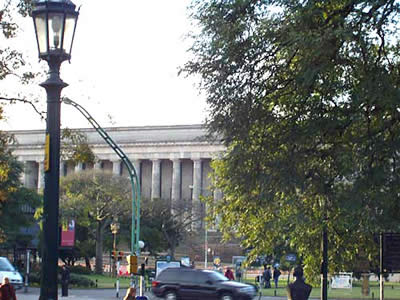
Facultad de Derecho, U.B.A. Sede Libertador
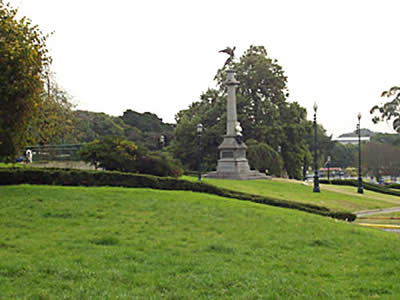
Plaza de la Recoleta
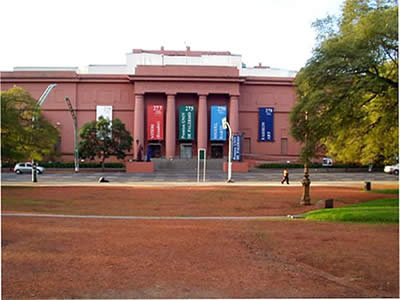
Museo Nacional de Bellas Artes
www.buenosairesantiguo.com.ar
www.amigosdelarecoleta.com.ar



 Vista lateral de la Biblioteca Nacional
Vista lateral de la Biblioteca Nacional



1 comment:
uh, el centro cultural recoleta es uno de mis lugares favoritos en bs as!! me empacho de expos cada vez que voy y cuando salgo me paseo entre los hippies :D
besotes, karl!
Post a Comment